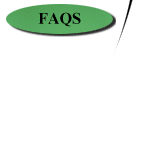



| Lesson 3: Formatting Your Page |
| Background colors can enhance the appearance of your resume. To add a background color to an HTML page, add the BGCOLOR attribute to the <BODY> tag. Specify your background color by using HTML standard color names (red, blue etc. ) or by using HTML hexadecimal numbers (Example: #FFFFFF, stands for white). Refer to the glossary for a complete listing of hexadecimal numbers and standard color names. Always specify a standard color name or a hexadecimal number when coding background colors. |


NOTE: Remember to use background colors that contrast well with your text.
The Align Attribute (ALIGN=". . .")
|
You can use the ALIGN attribute to specify the alignment of headings, paragraphs and various other HTML page elements on your resume. The ALIGN attribute allows you to position HTML page elements to the left (default position), to the center, or to the right.
|
The Center Container (<CENTER>. . .</CENTER>)
Although the CENTER container is deprecated, browsers still recognize it. You can use the CENTER container to center any HTML page element. To use the CENTER container simply enclose your text, or any other page element, within the CENTER container.
|
|
To prevent your text from running together in your resume, you must insert line breaks after text that is not nested within paragraph, heading, or list containers We'll learn about list containers later. For now, just remember that headings, list containers and paragraphs automatically create line breaks. The BR tag is an empty tag that begins a new line of text. The tag's "BR" stands for break. The BR tag performs the same function as the ENTER key in a word processor. Therefore, pressing the ENTER key to move to a new line won't work when composing HTML documents.
|
The NOBR Container (<NOBR>. . .</NOBR>)
|
The NOBR container creates an unbroken line of text. The container's "NOBR" stands for no break. If text exceeds the maximum width of the screen, browsers automatically wrap the text. The NOBR container will prevent an automatic text wrap and will require the user to scroll to the right to see the end of the unbroken line of text. You can use this container in your resume to keep important text on the same line. |
Example:
|
Syntax
|
Result
|
|
HTML is fun. |
The Horizontal Rule Tag (<HR>)
| The<HR> tag is an empty tag that inserts a horizontal
line between HTML elements.. The tag's "HR" stands for horizontal
rule. Horizontal rules are great for dividing HTML pages into sections.
You can use horizontal rules to separate the heading portion of your
resume from the body. Click the examples below to see how horizontal
rules can enhance your resume's appearance and organization.
You can adjust the appearance of horizontal rules by adding the following attributes to the <HR> tag:
|
|
The Unordered List Containers (<UL><LI>. . .</LI></UL>) An unordered list is simply a bulleted list. You can easily organize your work experiences into bulleted lists by using unordered list containers.
An unordered list structure consists of two container elements:
NOTE: The unordered list STYLE attribute may not work in less recent versions of Netscape and Internet Explorer. |
|
The &NBSP command allows you to add extra spacing between your text. You can use the &NBSP command to add spacing between your job titles and your jobs' beginning and ending dates on your resume.
By default, browsers only display one space between text. So even if you type more than one space between your text, browsers will only show one space between your text. |
Example:
I like (press space bar three times) HTML.
Displays:
I like HTML.
| To add extra space between your text, simply add the &NBSP where you desire extra space between your text. You may have to use many &NBSP commands to achieve the look you want. |
Example:
I like &NBSP &NBSP&NBSP&NBSP&NBSP&NBSP&NBSP&NBSP&NBSP HTML
Displays:
I like HTML
| Home | Lesson 1 | Lesson 2 | Lesson 3 | Lesson 4 | Lesson 5 | FAQS |